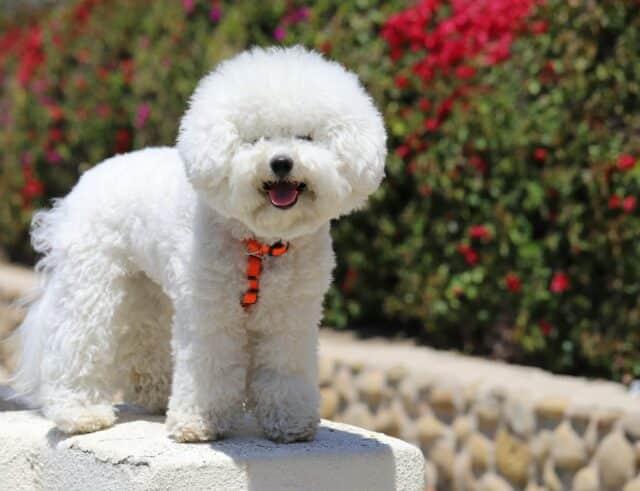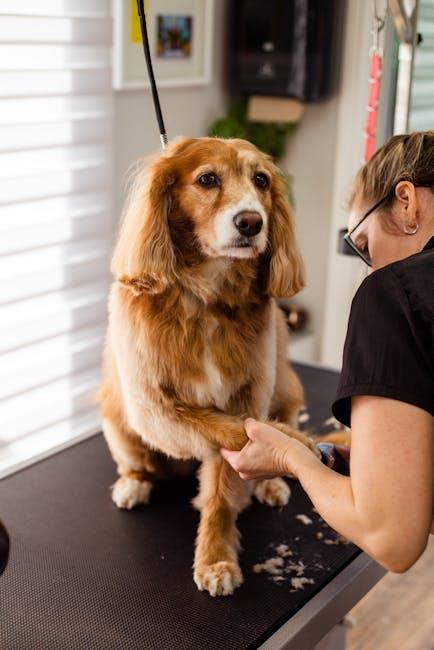When it comes to our beloved canine companions, grooming is more than just a beauty regimen—it’s an essential aspect of their overall health and well-being. Just like humans, dogs have varying grooming needs, with some breeds requiring a little more attention to maintain their coats and keep them looking their best. In this article, we’ll explore the world of dog grooming and guide you through the breeds that benefit from more frequent grooming care. Whether you’re a seasoned dog owner or a new pet parent, understanding these grooming necessities will not only enhance your dog’s appearance but also strengthen the bond you share. So, grab your brush and let’s embark on a journey to discover which dog breeds need a bit more pampering to stay happy and healthy.
Understanding Coat Types and Grooming Needs
Understanding the unique coat types of various dog breeds is essential to ensure their health and happiness. Dogs can have a range of coat types, from smooth and short to long and curly, and each requires a different level of grooming attention. Some breeds, like the Poodle and Bichon Frise, have coats that grow continuously and need regular trimming to prevent matting. Others, such as the Siberian Husky, have dense double coats that shed seasonally and require frequent brushing to manage loose hair.
Here are some general guidelines to help you navigate the grooming needs based on coat types:
- Smooth Coats: Breeds like Beagles and Boxers require minimal grooming, often just a weekly brush to remove dead hair.
- Double Coats: Breeds such as Golden Retrievers and Shih Tzus benefit from regular brushing, especially during shedding seasons, to keep their coats healthy and tangle-free.
- Curly or Wavy Coats: Poodles and Portuguese Water Dogs need frequent grooming and professional trims every 4-6 weeks to maintain their coat’s condition.
- Wire Coats: Breeds like Wire Fox Terriers require hand-stripping or clipping to maintain their texture and appearance, often needing professional grooming every 6-8 weeks.
By recognizing your dog’s coat type and its specific grooming needs, you can keep your furry friend looking and feeling their best.

Identifying Breeds with High Grooming Demands
When it comes to canine companions, some breeds demand a bit more attention in the grooming department. These breeds, often characterized by their lush coats, require regular maintenance to keep them looking and feeling their best. Breeds with high grooming demands typically have long or dense fur that can easily become tangled or matted without proper care. As a dog owner, understanding these needs can help you ensure your pet stays comfortable and healthy.
- Poodles: Known for their curly, hypoallergenic coats, Poodles need regular clipping and brushing to prevent mats and tangles.
- Shih Tzus: With their luxurious, flowing coats, Shih Tzus require frequent grooming to maintain their distinctive appearance.
- Old English Sheepdogs: These gentle giants have thick, shaggy coats that need consistent grooming to avoid matting.
- Maltese: Their long, silky fur is prone to tangles and requires daily brushing to keep it in pristine condition.
- Afghan Hounds: With their elegant, flowing locks, Afghan Hounds demand regular grooming to maintain their stunning appearance.
By recognizing the grooming needs of these breeds, you can better prepare for the time and effort required to keep your furry friend looking fabulous. Regular grooming not only enhances their appearance but also contributes to their overall well-being.

Essential Grooming Tools and Techniques for High-Maintenance Breeds
When it comes to keeping high-maintenance dog breeds looking their best, having the right grooming tools and techniques is essential. Double-coated breeds, like the Siberian Husky or the Pomeranian, require regular brushing to manage their dense undercoats. A slicker brush and an undercoat rake are invaluable for tackling tangles and reducing shedding. For breeds with continuously growing hair, such as the Poodle or the Shih Tzu, a combination of a quality pair of grooming scissors and a reliable electric clipper can help maintain their coats’ health and appearance.
For breeds prone to skin sensitivities, like the Cocker Spaniel, consider using hypoallergenic shampoos and conditioners to avoid irritation. It’s also crucial to pay attention to ear cleaning and nail trimming. Breeds with floppy ears, such as the Basset Hound, are more susceptible to infections, so gentle ear cleaning should be part of the routine. For nail care, a sturdy pair of clippers or a nail grinder will keep their paws in top shape, preventing discomfort and potential injury. Remember, patience and consistency are key to ensuring your furry friend enjoys their grooming sessions!

Tailored Grooming Schedules for Your Furry Friend
Each dog breed boasts its unique coat type, which determines the frequency and type of grooming required. For breeds with long or dense fur, like the Shih Tzu, Afghan Hound, or Collie, regular grooming sessions are essential to prevent tangles and matting. These furry friends benefit from professional grooming every 4-6 weeks, along with weekly brushing to maintain their luscious locks.
- Curly-coated breeds such as Poodles and Bichon Frises require frequent trimming to keep their coats manageable and prevent painful knots.
- Double-coated breeds, including Huskies and German Shepherds, need seasonal grooming to handle shedding and maintain coat health.
- Short-haired breeds, like Beagles and Dalmatians, might not need as frequent grooming, but regular baths and brushing can help control shedding and keep their skin healthy.
Understanding your dog’s grooming needs not only helps them look their best but also contributes to their overall well-being. Tailoring a grooming schedule to your pet’s specific needs ensures they are comfortable and happy year-round.

